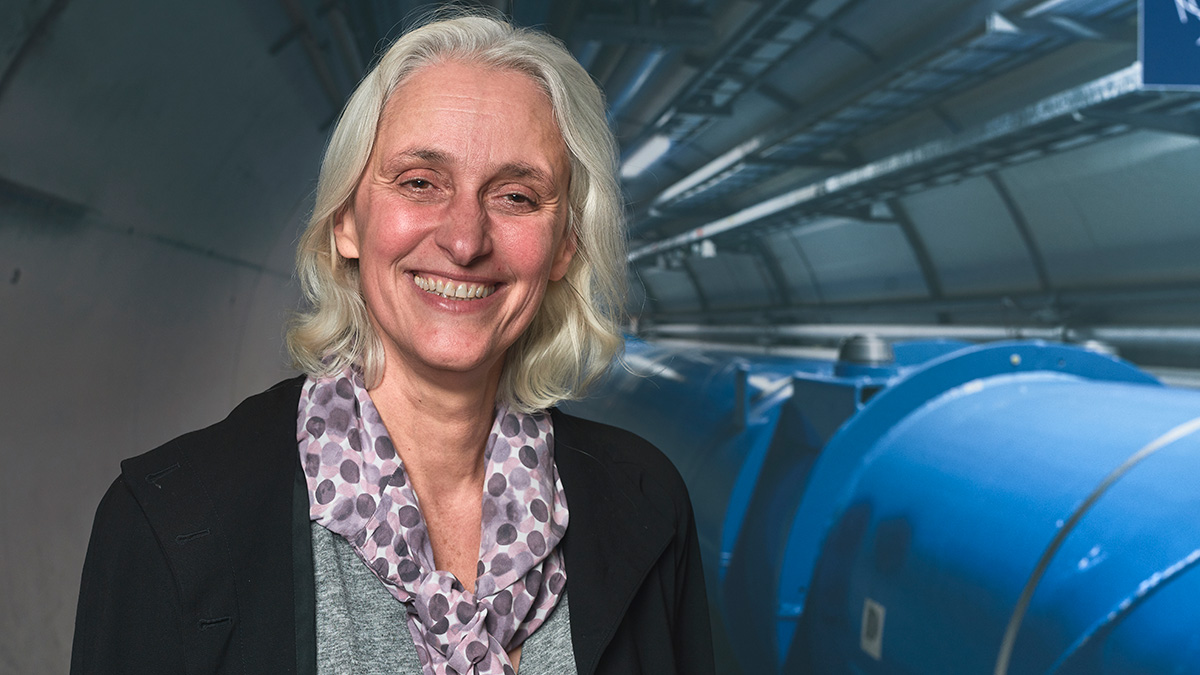CERN collider gets design go-ahead
The European particle-physics strategy update proposes further work on a huge 100 km circular collider at CERN, but a final decision to build it will not be made until 2026, as Michael Banks reports

CERN’s Council has approved an update to the European Strategy for Particle Physics that recommends further work on a huge 100 km collider – dubbed the Future Circular Collider (FCC) – that would be built in Geneva. But with no formal decision having been made to go ahead with the FCC, the strategy also calls for Europe to back a Japanese-led linear collider if it receives the nod from the Japanese government.
The report, released in late June, sets out a plan for the future of particle physics in Europe to the mid-2020s and beyond. It especially concerns the successor to the Large Hadron Collider (LHC), which first switched on in 2008. The 27 km-circumference machine has been smashing protons together at energies up to 13 TeV in the hunt for new particles and in 2012 LHC physicists announced they had discovered the Higgs boson with a mass of 125 GeV.
The LHC is currently undergoing a major £1.1bn “high-luminosity” upgrade – dubbed HL-LHC – that will increase the collider’s luminosity by a factor of 10 over the original design. The new strategy indicates that the completion and exploitation of the HL-LHC should remain “the focal point of European particle physics”.
The update, however, gives the green light for further study into the FCC, which would cost around £20bn. In January 2019 CERN released a four-volume conceptual design report for the FCC, which first called for the construction of a 100 km underground tunnel that would house an electron–positron collider (FCC-ee). The machine would focus on creating a million Higgs particles to allow physicists to study its properties with an accuracy an order of magnitude better than what is possible today with the LHC.
Once the physics programme for the FCC-ee is complete, the same tunnel could then be used to house a proton–proton collider, dubbed FCC-hh. The FCC-hh would use the LHC and its pre-injector accelerators to feed the collider, potentially reaching a top energy of 100 TeV – seven times greater than the LHC. CERN will now carry out a more detailed costing of the FCC as well as continue research and development into the magnet technology that would be required for such a machine at higher energies.
The other options
The strategy also approves European participation in the ¥800bn ($7.5bn) International Linear Collider (ILC) if it receives support from the Japanese government. First mooted over a decade ago, the ILC would accelerate and smash together electrons with positrons at 125 GeV in a 20 km tunnel to study the Higgs boson and other particles in precise detail.
In March 2019 officials in Japan said that their government had formally “expressed an interest” in the particle smasher but did not decide whether to host the machine. The final go-ahead will only be given if enough international support and funding can be found to construct the machine and there is a consensus within the Japanese scientific community that the project is worth pursuing.
Backing the FCC does not contradict supporting the ILC as the two could be complementary. If the ILC is given the green light, then CERN could opt to bypass the FCC-ee and build the FCC-hh after the LHC programme is complete.
The decision to prioritize the FCC and back the ILC, if Japan gives the go-ahead, puts the CERN-led Compact Linear Collider – another linear collider proposal – as a “plan B”. CLIC is not as technologically mature as the ILC, but could run at higher energies. It is now likely to be built only if the FCC becomes too expensive and the ILC is not given the green light by Japan.
CLIC spokesperson Philip Burrows from the University of Oxford says he congratulates the European Strategy group on its “careful deliberations and clear recommendations”. “An electron–positron collider Higgs factory as highest priority for our field is clearly the way forward,” Burrows told Physics World. “The options for CLIC as a CERN-based Higgs factory, and subsequent energy-frontier exploration collider, are clearly articulated, and the door is opened wide for Europe to make major contributions to ILC should Japan go ahead and realize ILC as a global project. Either way we can plan to realize a linear collider Higgs factory.”
Particle theorist John Ellis from King’s College London told Physics World that he is “happy” with the proposal to support a Higgs factory and prepare for a high-energy collider at CERN. “CLIC is de-emphasized, though not explicitly dropped,” he says, adding that the ILC is mentioned “only as something with which the European particle physics community would wish to collaborate, without any commitment by CERN”.
The FCC, CLIC and the ILC are not the only proposals for a future high-energy collider. Physicists in China unveiled the conceptual design for the country’s own 100 km tunnel in September 2018. It would first house an electron–positron machine before hosting a proton–proton collider operating at 100 TeV. If it gets approval, construction could start before the FCC.